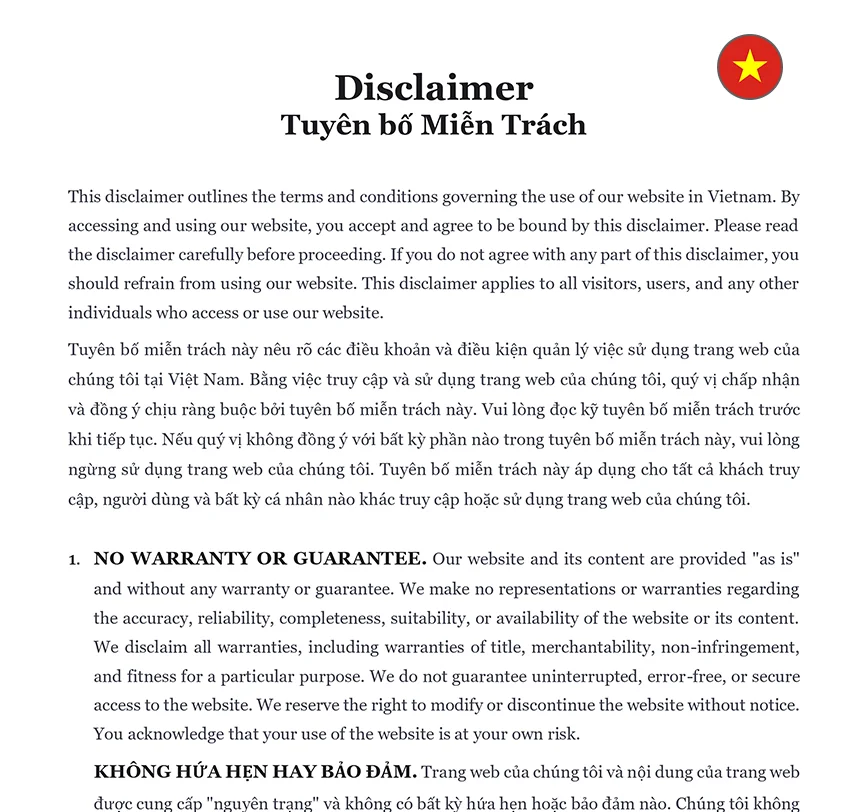What is a Website Disclaimer?
A website disclaimer is a statement that limits your liability and outlines the terms under which users can interact with your website. This document typically includes a declaration about the accuracy and reliability of the information provided, the extent of your liability for any potential issues arising from the use of your site, and details about external links and user responsibilities. A well-crafted website disclaimer helps manage legal risks by making it clear that while you strive to provide accurate and useful information, you are not responsible for any errors, omissions, or damages resulting from the use of your site. It sets the groundwork for user expectations and legal protections, playing a vital role in online legal compliance.
Importance of a Website Disclaimer
A website disclaimer is crucial for several reasons:
Protection from Legal Claims: It helps protect your business from potential legal claims by clearly outlining the limitations of your liability. This is essential in avoiding disputes related to the content and services provided on your site.
Clarification of Information: By stating that the information on your website is provided “as is,” a website disclaimer clarifies that you are not responsible for any inaccuracies or omissions. This limits your liability for errors or incomplete information that users might rely on.
Prevention of Legal Disputes: An effective website disclaimer safeguards against potential legal disputes by informing users about the limitations and conditions of using your website. This reduces the likelihood of users making claims based on incorrect or misleading information.
Management of User Expectations: It sets clear expectations about what your website offers, what it does not, and how users should interact with it. This helps manage user expectations and prevents misunderstandings.
Enhanced Credibility: Transparency in your website disclaimer can enhance your website’s credibility. By openly communicating the terms and limitations, you build trust with your audience and demonstrate a commitment to clear and honest communication.
ℹ️ For details on data protection, you may also review our Privacy Policy, which complements the website disclaimer by outlining our data handling practices.
Key Elements of a Website Disclaimer
Here are some critical components to include in your website disclaimer to ensure it effectively communicates your terms and limits your liability:
| ➤ Accuracy of Information: This section should clearly state that while you strive to provide accurate and up-to-date information, you make no guarantees about its completeness or accuracy. It indicates that users should verify the information before relying on it for decision-making. |
| ➤ External Links: This part of the disclaimer should address that your website may contain links to external sites. Clarify that you are not responsible for the content, accuracy, or availability of these external sites and that you do not endorse them. |
| ➤ Limitation of Liability: Specify the extent to which you are liable for any damages or losses arising from the use of your website. This section should outline that your liability is limited to the fullest extent permitted by law, protecting you from extensive legal claims. |
| ➤ User Responsibilities: Define the responsibilities of users when accessing and using your website. This can include guidelines for acceptable use and prohibitions against misuse. It helps ensure that users understand their obligations while interacting with your site. |
| ➤ Changes to the Disclaimer: Indicate that you reserve the right to update or modify the disclaimer at any time. Users should be informed that it is their responsibility to review the disclaimer periodically to stay informed of any changes. |











